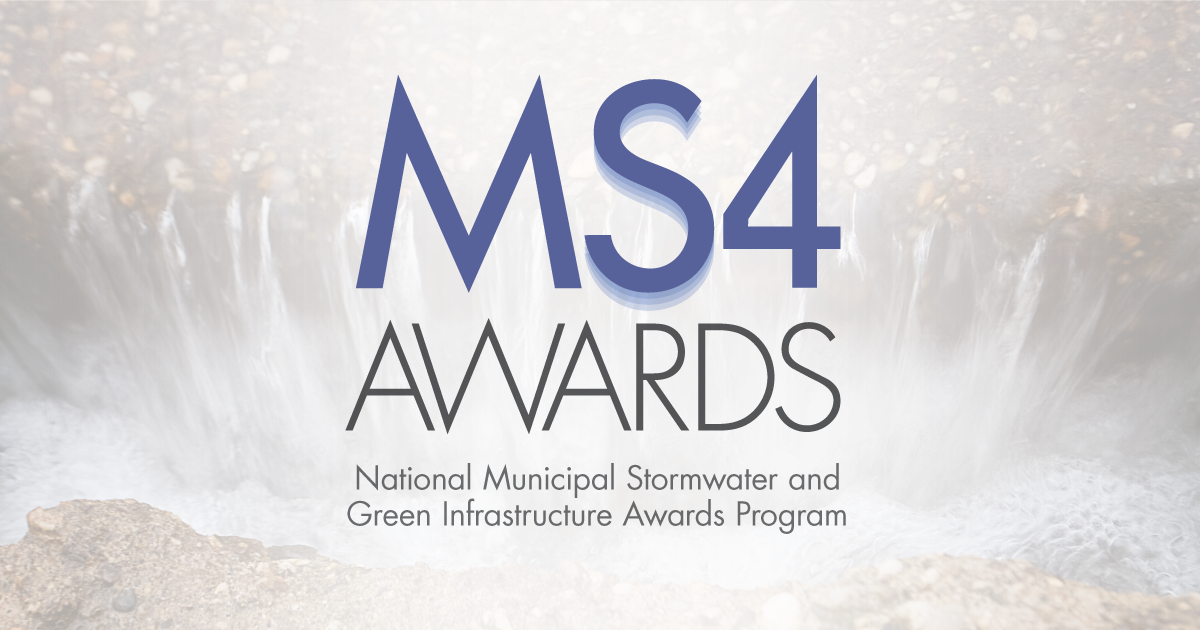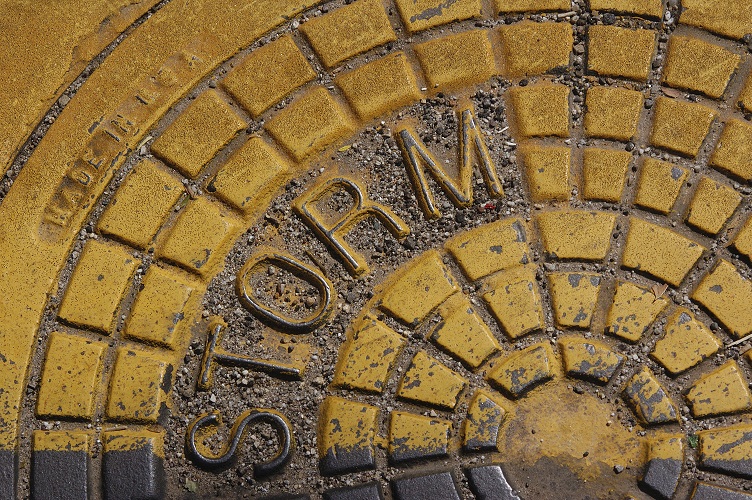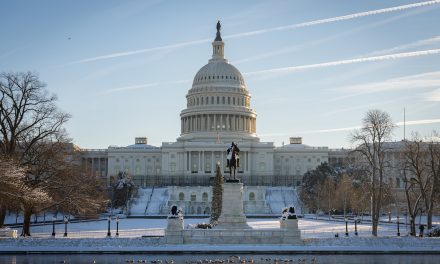The Water Environment Federation (WEF; Alexandria, Virginia) has recognized six sector-leading stormwater organizations as winners of its 2023 National Municipal Stormwater and Green Infrastructure Awards program, also known as the MS4 Awards. This year’s winners, celebrated for performing beyond regulatory requirements to control flooding risks, protect public health, and safeguard natural ecosystems, are the ninth class of MS4 Awardees since WEF introduced the honors alongside the U.S. Environmental Protection Agency (EPA) in 2015.
Nominees are either Phase I or Phase II Municipal Separate Storm Sewer System (MS4) permittees, which undergo a rigorous review by a committee of stormwater management experts. The committee ultimately selects three MS4 Award winners from each phase: a Program Management winner, an Innovation winner, and an Overall winner. All awardees received formal recognition during a ceremony at WEFTEC 2023 in Chicago.
“By winning a WEF MS4 Award, this year’s honorees have proven that their commitment to creating healthier communities goes far beyond simply what their permits obligate them to do,” said Elizabeth Krousel, WEF Stormwater Community Chair and Associate Vice President for Michael Baker International (Virginia Beach, Virginia). “These high-performing organizations are an inspiration to the entire stormwater sector, demonstrating how outside-the-box thinking can stretch our activities, messages, and budgets further.”
Program Management Winners
In the Program Management category, the Anne Arundel County Department of Public Works Bureau of Watershed Protection and Restoration (BWPR; Annapolis, Maryland) was awarded first place among Phase I permittees.

The judging panel recognized BWPR for its resourceful approaches to project delivery, which have enabled the agency to deploy over USD $260 million toward water-quality projects and programs within the last decade. For example, BWPR led the county’s efforts to become the first jurisdiction in Maryland to use the state’s nutrient-trading program to achieve MS4 permit compliance. The bureau also maintains a long-term agreement with the Anne Arundel County Watershed Stewards Academy that empowers residents to undertake stormwater projects in their communities. This Master Watershed Stewards program has resulted in more than 4,350 privately built stormwater projects throughout the county thus far, involving the introduction of more than 200,000 native trees and engaging more than 200,000 residents. Additionally, BWPR has had major success in capitalizing on state and federal grant programs, supplementing funds from the county’s dedicated stormwater utility to support an extensive set of control measures, monitoring programs, and outreach efforts.
First place in the Program Management category among Phase II permittees went to Capitol Region Watershed District (CRWD; St. Paul, Minnesota), a special-purpose jurisdiction that manages stormwater in a highly impervious, urban region that drains into the Mississippi River.
CRWD maintains an aggressive approach to stormwater-focused redevelopment. For example, the district possesses among the nation’s most stringent regulations for construction, requiring sufficient runoff-control measures to capture at least 2.8 cm (1.1 in.) of rainfall for any redevelopment covering 0.4 ha (1 ac) or more. Mainly funded via property taxes, CRWD encourages residents to invest in private stormwater projects by providing various grants, which thus far have funded more than 600 private clean water projects such as rain gardens, green roofs, and permeable pavers. The district’s extensive environmental monitoring network, consisting of nearly 8,000 stations that transmit real-time, publicly available data on runoff, demonstrate that these grant-funded projects have kept more than 45 kg (100 lb) of phosphorus and more than 15,000 kg (33,000 lb) of sediment per year from entering the Mississippi River. CRWD also manages a successful Adopt-a-Drain program, through which residents have assumed responsibility for more than 3,000 storm drains, preventing the entry of more than 12,000 kg (26,000 lb) of leaves, grass, and trash into runoff conveyances.
Innovation Winners
Louisville and Jefferson County Metropolitan Sewer District (MSD; Louisville, Kentucky) came out on top in this year’s Phase I Innovation category, in part for its focus on educating the next generation of ratepayers and water professionals.
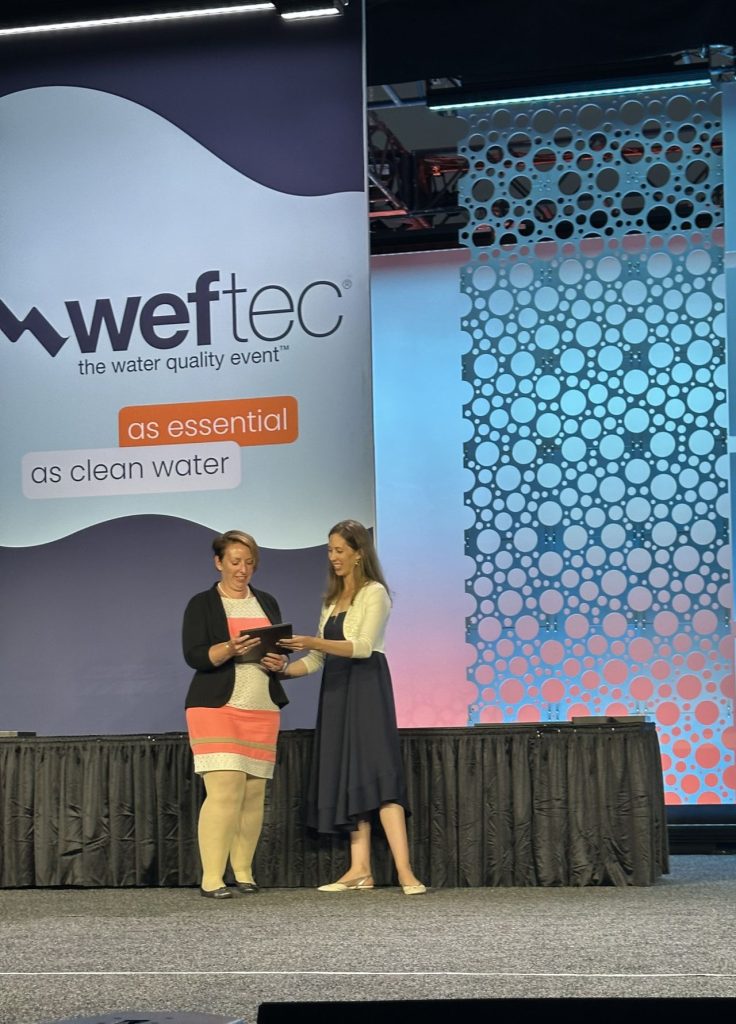
An original character called “Mandy the Salamander” has become a common sight in Louisville and its surroundings, conveying MSD’s conservation and anti-littering messages on social media as well as at state fairs, public libraries, festivals, and other public events. The district frequently hosts field trips that include hands-on components for local student groups. Since 2017, MSD has played an active role in the Louisville-based workforce program KentuckianaWorks. Through the program, MSD has offered a growing number of paid summer internship programs that equip student participants with 6 weeks of on-the-job, water-sector training. However, the program also helps students develop general career skills, with district-sponsored workshops in such topics as financial literacy, resume writing, ethics, and social media etiquette. In summer 2023, nine students completed the program, which set them up for success in the next stage of their lives — in the water sector or elsewhere.
In the Phase II Innovation category, Camp Hill, Pennsylvania’s Lower Allen Township Public Works earned first place for its modern and transparent approach to water quality monitoring.
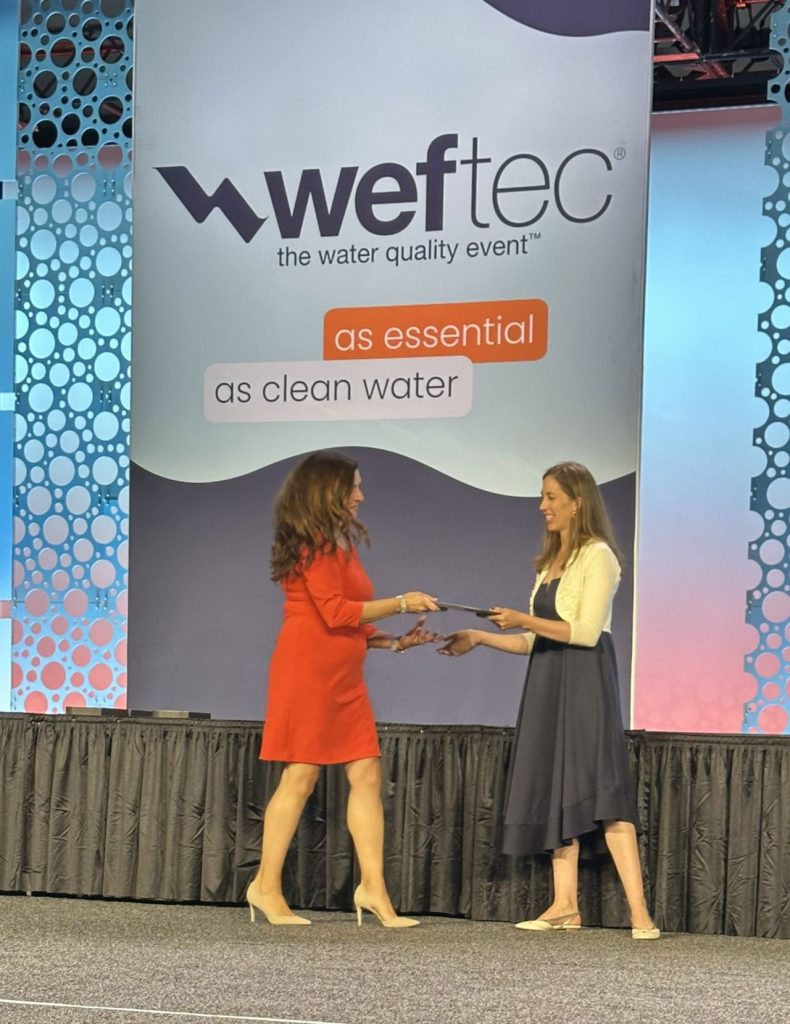
The small municipality of 21,000 residents has used funding from grants as well as a modest stormwater fee introduced in 2018 to invest in tech-enabled approaches to protect two vulnerable waterways within its jurisdiction. A water quality sampling and analysis campaign from 29 different points along Yellow Breeches Creek and Cedar Run provides more than 100 water samples each month, which Public Works uses to create an interactive, publicly available, geographic information system (GIS)-based map. This map is instrumental for ongoing illicit discharge detection and elimination (IDDE) efforts as well as targeted public outreach, which have enabled the department to pinpoint sources of pollution and take remedial action. The department has spearheaded various stream cleanup events in partnership with local scouting groups and watershed advocates and built strategically placed bioretention facilities according to insights gleaned from its GIS map. This monitoring project won a Pennsylvania Governor’s Award for Environmental Excellence in 2023.
Overall Winners
For excellence in both program management and innovation, judges recognized Fairfax County (Virginia) Department of Public Works and Environmental Services (DPWES) as this year’s Phase I overall winner.
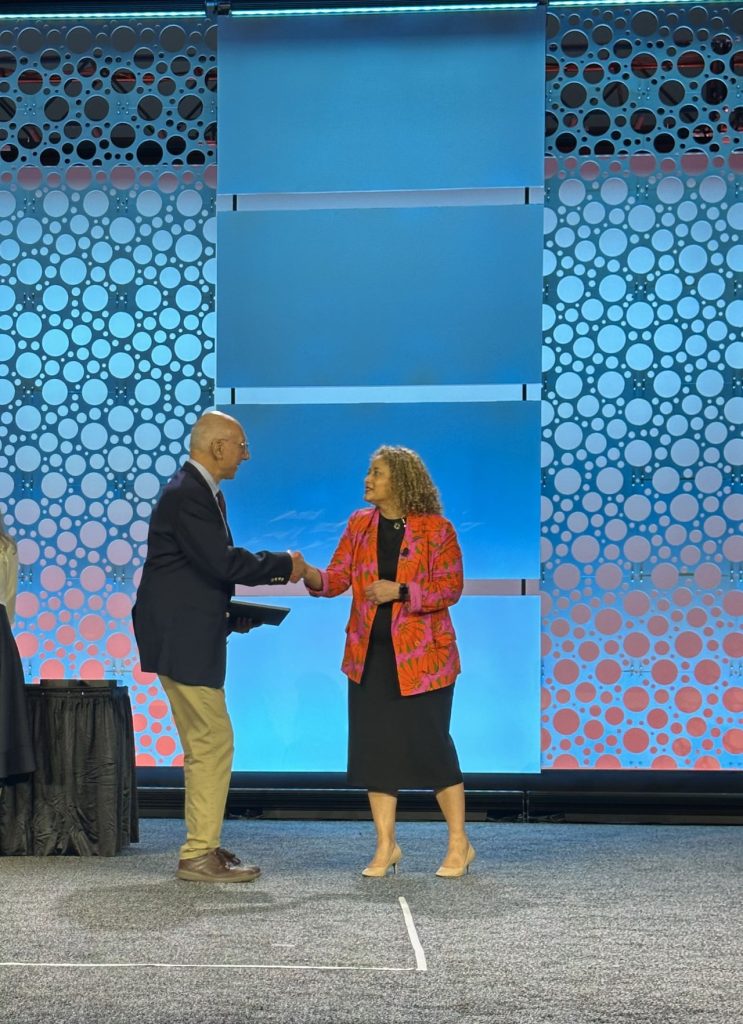
DPWES maintains several groundbreaking programs intended to engage its more than 1 million residents in stormwater management while minimizing staffing and labor costs. Alongside other agencies within the county, it runs the Operation Stream Shield program, which provides paid work for individuals experiencing homelessness in cleaning up roadways, trails, and streams identified by DPWES’ IDDE efforts as runoff-pollution hotspots. Since 2019, Operation Stream Shield has resulted in the elimination of more than 757 Mg (834 ton) of litter that otherwise would enter local waterways. Mobilizing county students to gain hands-on green infrastructure experience is also a focus for DPWES. Its Revitalize, Restore, Replant! (R3) program, which supports student-led efforts to transform existing gardens on public-school campuses into stormwater-friendly pollinator meadows, has engaged nearly 5,000 students who have planted more than 25,000 new plants since 2017. Similarly, DPWES’ Get2Green program provides a curriculum that empowers public school students to become better environmental stewards and provides a framework for schools to receive a designation as an “Eco-School.” Meanwhile, the department enforces more stringent regulatory requirements for erosion and sediment control than either the state or its MS4 permit demand, and assesses a progressive, property value-based stormwater fee to subsidize its work.
The highest marks overall among Phase II nominees went to the Highways Maui District of the State of Hawaii Department of Transportation (Kahului), which has scaled up its stormwater management activities significantly in recent years and already is reaping the benefits.
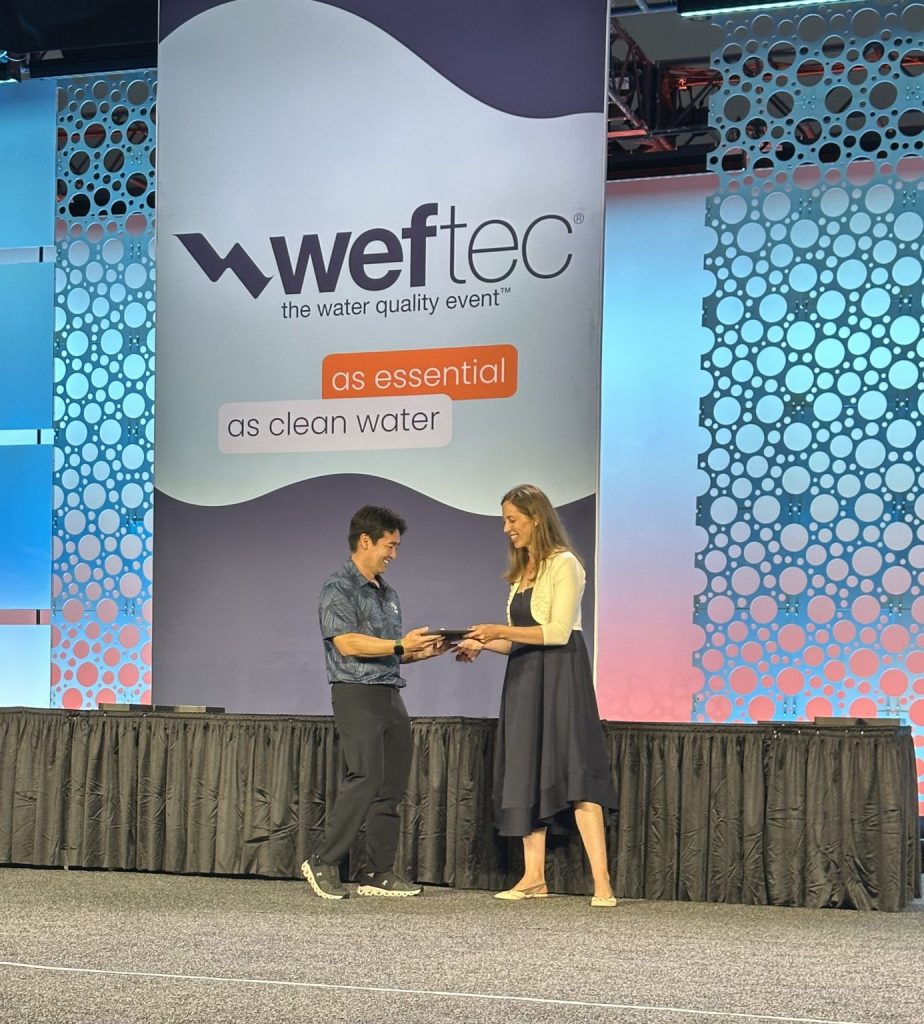
Ongoing advocacy at the state level has provided sufficient resources for the district, which presides over 32 km (20 mi) of highways within a highly urbanized area, to more than triple its budget and double its full-time staff since 2019. The district earned this additional funding thanks to the success of several ongoing stormwater programs, including a successful Adopt-a-Highway campaign that has generated more than 250 highway-cleanup events since 2021, the adoption of a sophisticated asset management system, and a proactive IDDE program that boasts a 100% resolution rate. Judges noted the district’s attention to cultural sensitivity in its messaging and public outreach. The Hawaiian language features prominently in the district’s educational materials, as does a prevailing focus on the connection between stormwater management and the health of the ocean — providing a crucial, cross-cultural touchpoint for residents that makes conservation messaging clearer and more effective. The district partners with the Maui Ocean Center on various outreach initiatives, and also maintains close cooperation with other transportation agencies, nonprofits, and educational institutions.

ABOUT THE AUTHOR
Justin Jacques is editor of Stormwater Report and a staff member of the Water Environment Federation (WEF). In addition to writing for WEF’s online publications, he also contributes to Water Environment & Technology magazine. Contact him at jjacques@wef.org.

